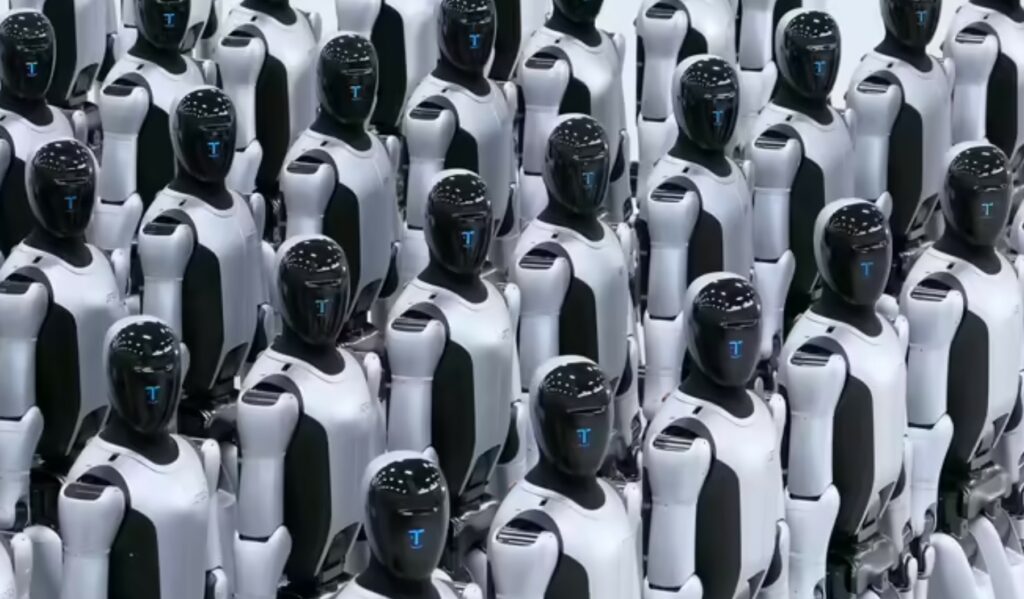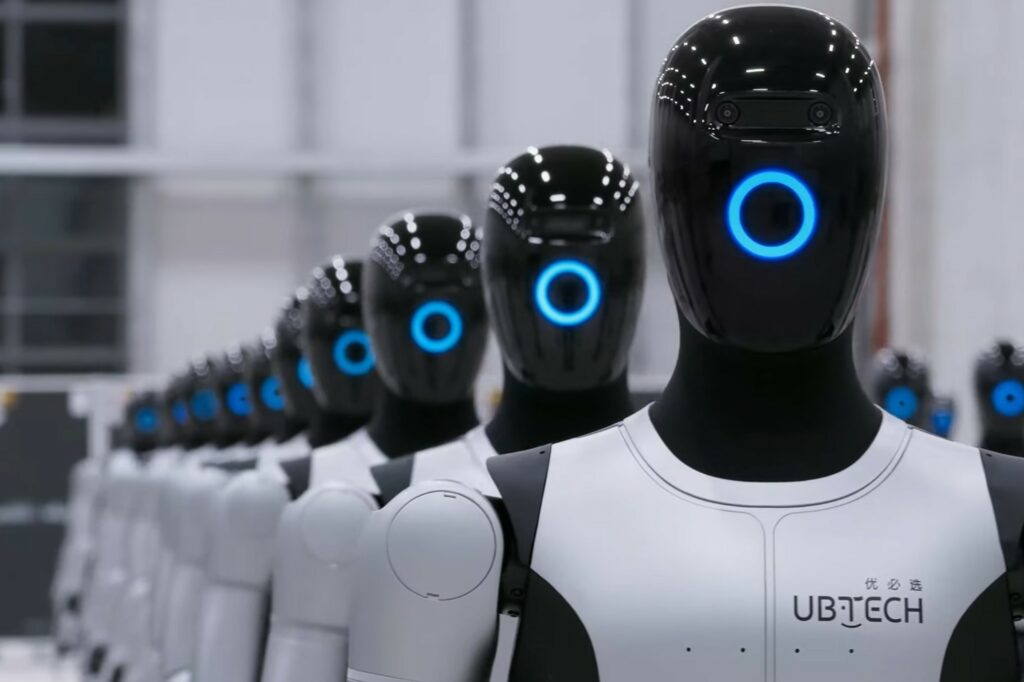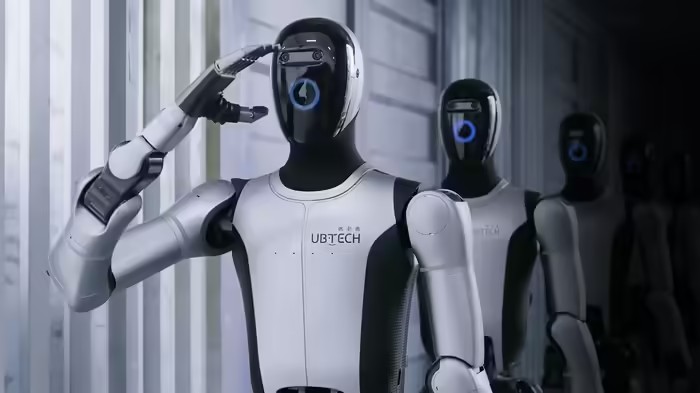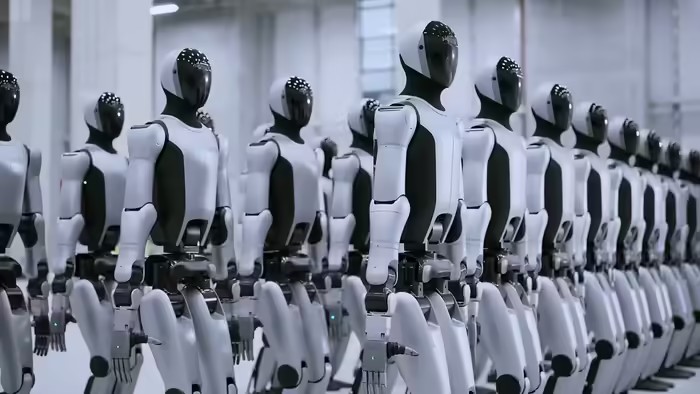
Redazione RHC : 21 November 2025 08:20
Shenzhen -based UBTECH Robotics has publicly demonstrated its new wave of humanoid robots, delivering several hundred of them in a single shipment.
The announcement was accompanied by a video that quickly gained attention on social media. The footage, shot inside a large, all-white warehouse, captures long lines of robots engaged in synchronized movements: they remove and replace the batteries on their backs, sit together, and then advance in a line toward the transport trucks.

According to the company , this is the first large-scale delivery of the second generation of its humanoid models, a step considered strategic for industrial production. The clip ends with the word ” Forward ,” almost a motto accompanying the operational debut of the new robots.
The video’s release has generated mixed reactions: some greeted it with amazement, while others expressed concern. Some users even questioned the authenticity of the footage, speculating that it might be a digitally created sequence, given the atmosphere reminiscent of sci-fi film sets.

Humanoid robots are designed to mimic the posture, movement, and behavior of humans, allowing them to work in shared environments. Their journey began a long time ago: in 1973, Waseda University in Japan presented Wabot-1, considered the first fully functional humanoid ever built. Since then, research has continued, and today China is among the countries pushing the boundaries of advanced robotics.

Alongside technological interest, however, concerns about the future of work are resurfacing. The possibility that machines of this type could replace repetitive or strenuous roles raises concerns about the economic impact on those in lower-skilled jobs, which risk being the most exposed to competition from always-on, wage-free robots.
UBTECH’s initiative also fits into the already tense technological battle between China and the United States. The rapid growth of China’s robotics sector is being closely monitored by Washington, which has been competing with Beijing for years for leadership in fields such as semiconductors, artificial intelligence, and automation. It remains to be seen what the US response will be to a breakthrough considered significant in a sector strategic to both powers.
 Redazione
Redazione